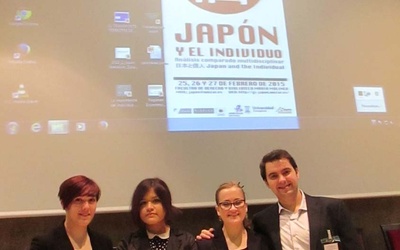The Nikkei of Latin America and Latino Nikkei

Lic. Alberto Matsumoto examines the many different aspects of the Nikkei in Japan, from migration politics regarding the labor market for immigrants to acculturation with Japanese language and customs by way of primary and higher education. He analyzes the internal experiences of Latino Nikkei in their country of origin, including their identity and personal, cultural, and social coexistence in the changing context of globalization.
Stories from this series
Japanese Language Education Abroad
Jan. 23, 2017 • Alberto J. Matsumoto
In recent years, the popularity of Japanese anime, manga and Japanese cuisine has led to an increase in the number of people studying Japanese overseas, which has in turn led to an increase in the number of foreigners coming to Japan. According to a survey conducted by the Japan Foundation in 20121, there are approximately 4 million people around the world studying Japanese language under 63,000 teachers at 16,000 institutions. Over the past 30 years, the number of learners has …
The pension situation in South America and pension issues for South American workers in Japan
Nov. 23, 2016 • Alberto J. Matsumoto
In recent years, consultations for foreigners at consultation desks have been increasing regarding pensions, nursing care, and retirement. As of December 2015, there are 230,000 foreigners from South America residing in Japan, including 170,000 Brazilians, 47,000 Peruvians, 5,400 Bolivians, and 2,600 Argentines. By age, those aged 60 or older make up 10% or less of the total, so it is not likely that many South Americans will be faced with pension or nursing care issues right away. However, with almost …
Latin America's low savings rate: is Japan's also quite low? -What is the savings rate of Japanese South American worker households in Japan?-
Oct. 10, 2016 • Alberto J. Matsumoto
Since around 2000, Latin American countries have been attracting attention for their high economic growth rates, and the consumer market of the new middle class has become the focus of global attention. International prices of primary products such as oil, mineral resources, and grains have soared, and many countries (Brazil, Mexico, Argentina, Bolivia, Venezuela, Chile, Uruguay, Paraguay, Peru, Ecuador, Colombia, etc.) have had good finances and implemented comprehensive social policies, leading to the belief that they would finally be able …
The connection between the next generation of Japanese descendants and Japan: Changes in Japanese societies in Latin America
Sept. 30, 2016 • Alberto J. Matsumoto
What kind of Nikkei are the "next generation of Nikkei1 "? Are they simply the descendants of Japanese who emigrated to Latin America - third, fourth, fifth generation, etc. (including not only Japanese, but also people of other races and ethnicities such as half and quota2 )? Or are they the "millennials" generation of Nikkei who have moved away from Japaneseness, young people who are free of ties, have a weak sense of belonging, are flexible, like new things, and …
Is the principle of equal pay for equal work difficult to apply to foreign workers?
July 25, 2016 • Alberto J. Matsumoto
At the end of January this year, the government announced its intention to take steps to realize equal pay for equal work as part of the "Japan Plan for a Society of 100 Million Active Parties." The government's intention is to correct the wage disparity that exists between regular and non-regular employment and to improve the income of non-regular workers, but it goes without saying that there are pros and cons to this argument.1 Around the same time, I came …
The economic relationship between Latin America and Japan that Japanese people don't know about
May 18, 2016 • Alberto J. Matsumoto
Latin America is home to the world's largest Japanese community, numbering 1.65 million. Meanwhile, in Japan, a Japanese community of 240,000 South American people is forming as Japanese workers who immigrated there since the 1990s have settled there. Japanese people are Japanese immigrants before and after the war and their descendants, but now there are more families with non-Japanese spouses, and the community is becoming quite diverse. Japanese people are often connected to Japan through the Japanese language and culture, …








